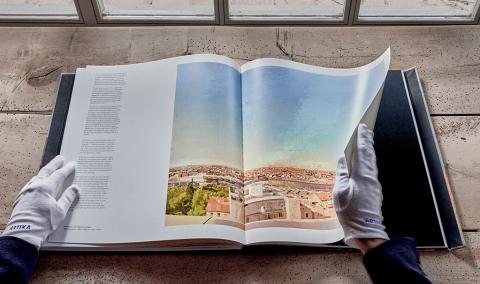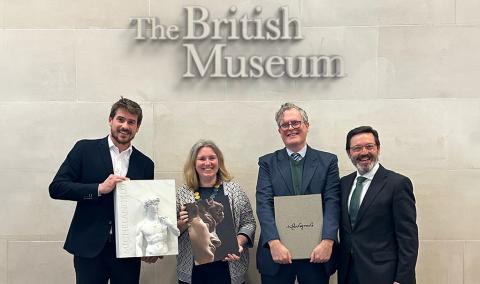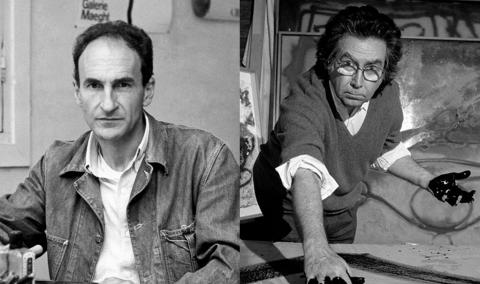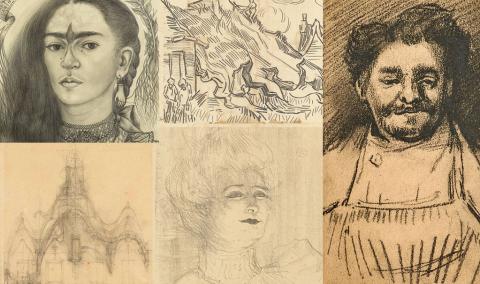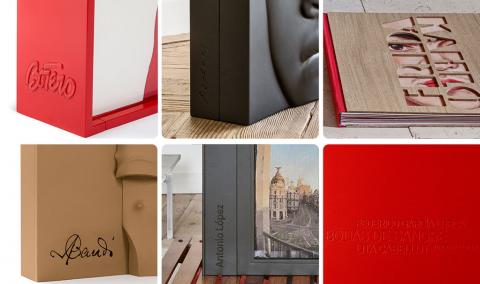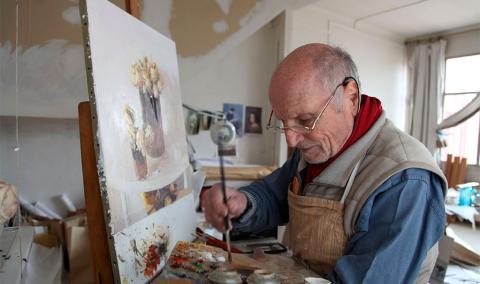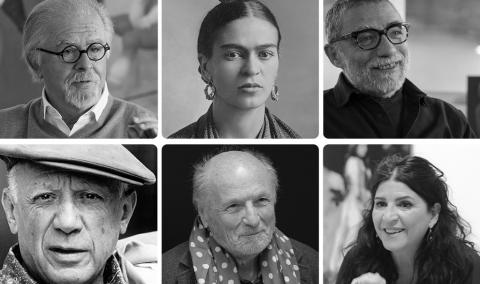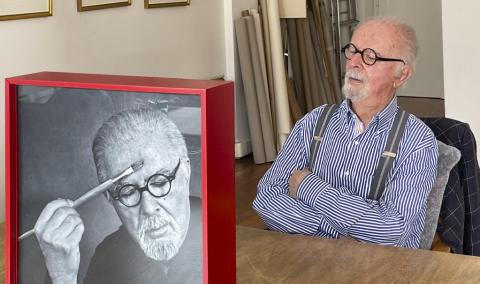NEWS DETAIL
Botero in ARTIKA: remembering the Maestro through two exclusive works

On April 19th, Fernando Botero would have turned 92 years old. His involvement with ARTIKA has left a deep imprint; thus, this month, we aim to recall some of the hallmarks of his style. Here are some examples of his unique approach to art, drawn from the two editions he left us as an exclusive legacy.
An unforgettable creator
If the greatness of a person is measured up close, maestro Botero is a prime example. The ARTIKA professionals who had the privilege of working closely with him preserve memories of his gracious and attentive demeanor.
The fruit of these encounters with the Colombian maestro is encapsulated in two exclusive editions: Botero’s Women and Via Crucis. In these, all the traits that make Botero such a special and unmistakable artist are present.
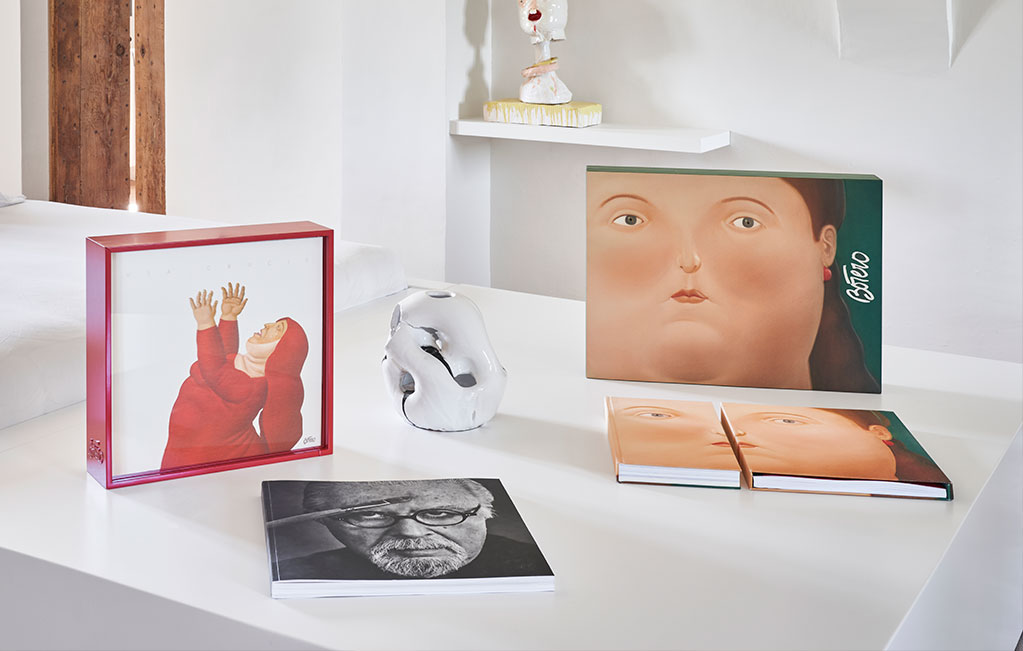
Women and myths
One of the main works from Botero's early phase was his Mona Lisa at Twelve Years. From that point, the female figure has always been one of the most characteristic themes in the artist's iconography.
Botero’s Women includes a selection of forty-five drawings that cover all nuances: women of all ages in everyday or mythological scenes, in ironic, mysterious, or dramatic poses. Let's take a closer look at a couple of examples.
Woman reading (Mujer leyendo), pencil on paper, 1987
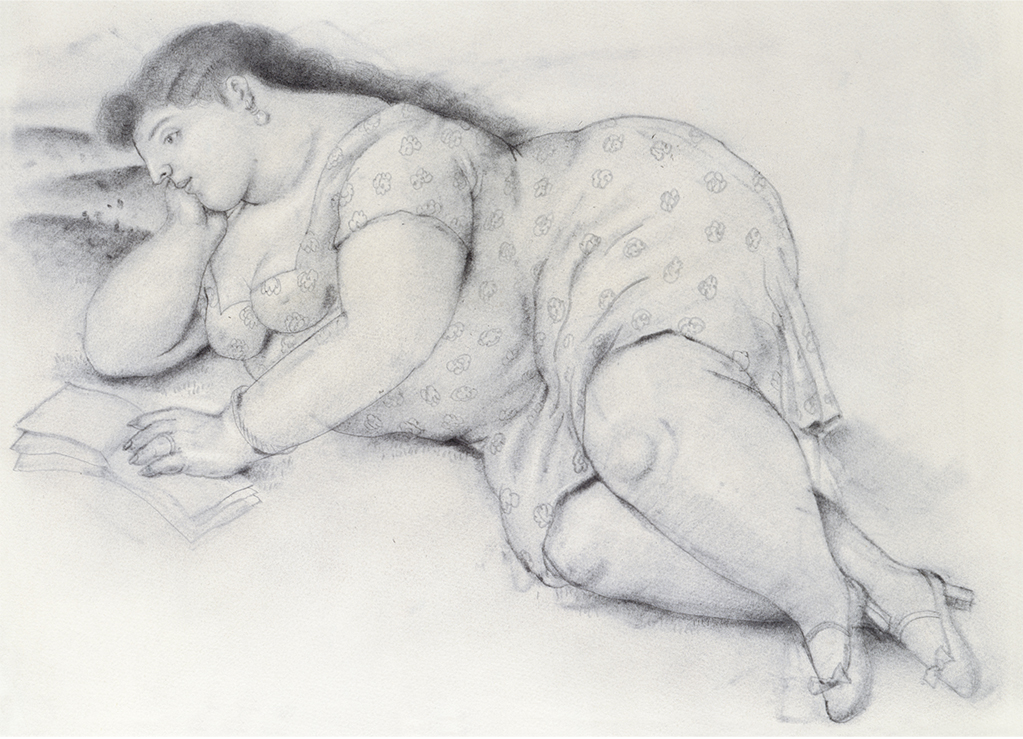
While images of models posing for the artist or gazing at the viewer with nonchalance are often remembered, Botero frequently depicted a woman reading. This everyday scene stands out for the peace and tenderness emanating from the woman's face and relaxed posture, oblivious to the outside world and engrossed in her reading. The customary scenes represented in these works often combine everyday actions with references to pictorial tradition or classical myths.
The Rape of Europa (Rapto de Europa), pencil on amate paper, 2001
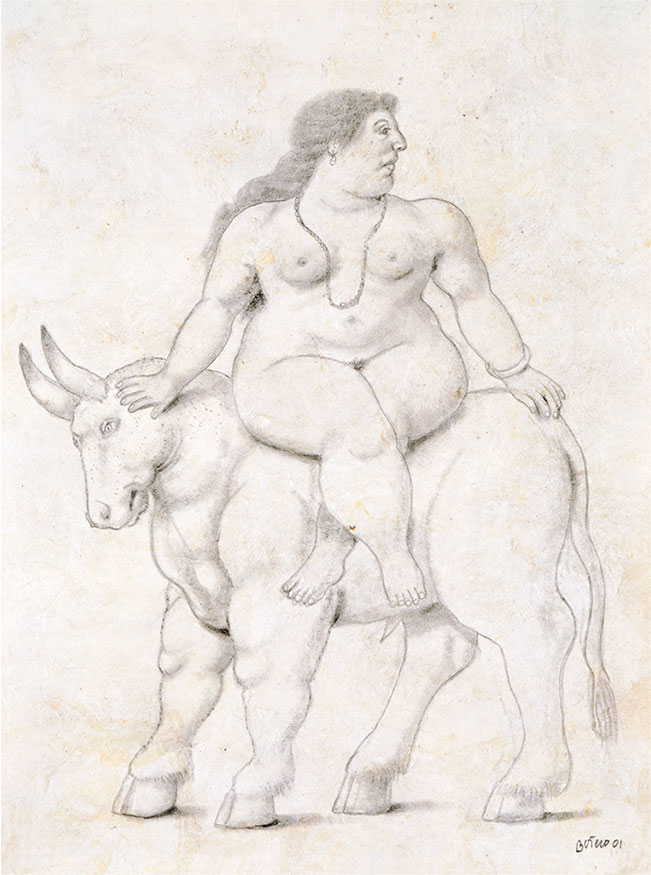
This image portrays the classic iconography of the legend of Europa, a Phoenician princess who was abducted by Zeus transformed into a white bull. According to the mythological tale, the Greek god carried her across the sea to Crete (and she eventually lent her name to the continent). This scene has been depicted by artists like Rembrandt, Titian, and Picasso, and Botero himself represented it on several occasions, also in the form of sculpture.
Botero's roots
With his distinctive style, in Via Crucis Botero offers a journey through European painting from the year 1200 until the emergence of Baroque.
At the same time, he delves into his inner world with references to his homeland. For instance, some works incorporate details that evoke the landscapes and streets of his childhood.
His vision of Christ's suffering offers multiple readings: it shows us that human emotions transcend cultures, epochs, and beliefs.
Jesus in the garden of Gethsemane (Jesús en el jardín de Los Olivos), watercolor and pencil on paper, 2011

The moments before Christ's arrest and Passion are widely represented in art history. Through the composition of the scene, Botero alludes to works such as Christ in the garden of Gethsemane (1460) by Andrea Mantegna and The Resurrection (1463-1465) by Piero della Francesca. However, Botero eliminates supernatural references. No angels appear, and the sleeping apostles wear contemporary clothing.
Jesus falls the first time (Jesús cae por primera vez), watercolor and pencil on paper, 2011

This powerful and symbolically charged image occupies a prominent place in any depiction of the Via Crucis. Botero places Jesus in a humble neighborhood with mountains in the background that echo the landscape of Antioquia. In doing so, Botero follows the tradition of setting biblical stories in recognizable settings for the faithful. The scene provides a dynamic dialogue with the drawings that follow in the series (Jesus falls the second time and Jesus has fallen).
Crucifixion (Crucifixión), pencil and colored pencil on paper, 2010
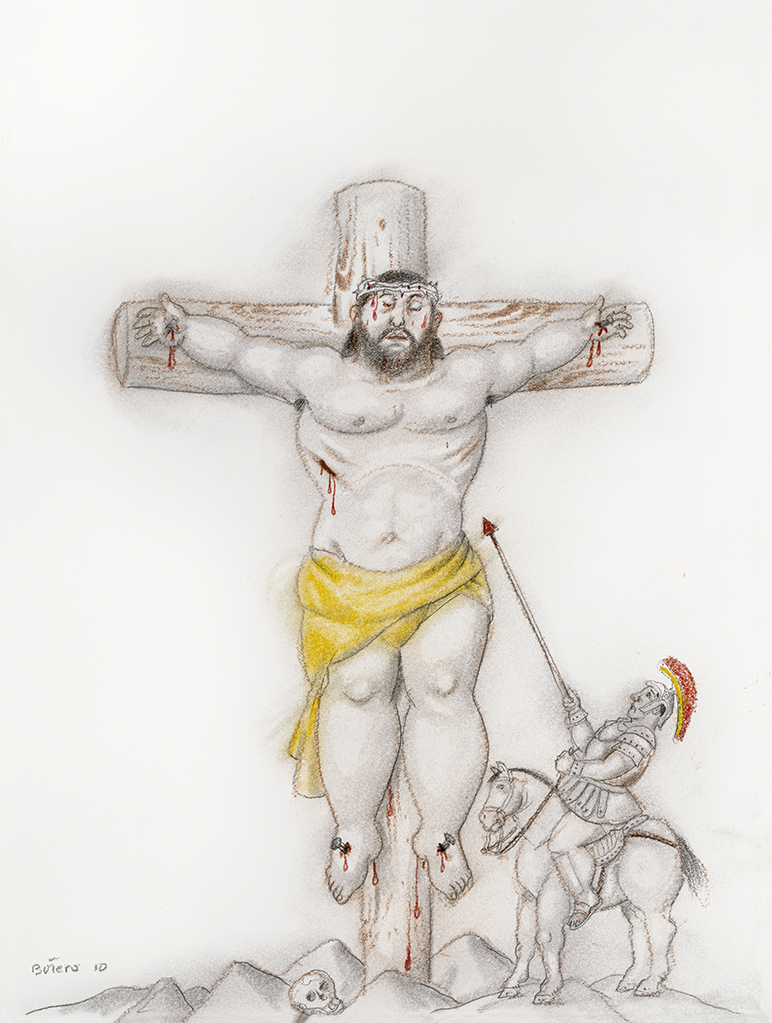
The most significant milestone in Christ's life is summed up in the Gospels in a few words, but it is the most iconic image of the New Testament with countless artistic interpretations. Here, Botero presents a monumental Christ accompanied by two classical references: the figure on horseback of the centurion Longinus, who pierced Jesus with his spear, and the skull at the foot of the cross, which according to tradition belonged to Adam. Yet, the maestro's strokes go beyond depicting a religious theme: they move the viewer because they speak of human suffering.
A year without maestro Botero
At ARTIKA, we have many reasons to pay tribute to an artist who created his own style and knew how to connect with all kinds of audiences, beyond languages and borders.
ARTIKA'S NEWS
